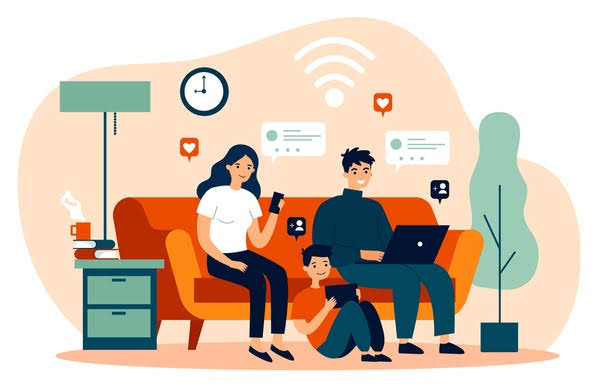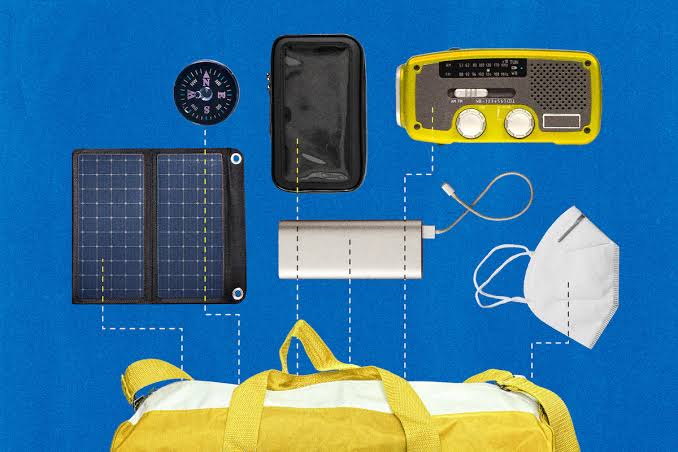In 2025, gadgets are essential tools that shape how people and brands express themselves online. Smartphones, tablets, smartwatches, and AI devices are key to creating, sharing, and using content on social media. As people rely more on these devices, the line between online identity and real life is fading. Gadgets connect users to their growing online worlds. This article looks at how gadgets affect online behavior, visibility, and interaction in today’s digital world.
The Evolution of Gadgets and Social Media in 2025
Over the past few years, gadget technology has undergone rapid transformation. Devices are now faster, smarter, and more integrated with social platforms than ever before. In 2025, gadgets are designed with embedded AI chips, real-time media optimization, and built-in tools for creators and influencers. Phones now support 8K video, instant editing, and live streaming across multiple platforms simultaneously. Wearables track emotional responses and user engagement, allowing content to be adjusted based on biometric feedback.
Social media platforms, in turn, are designed to be gadget-responsive. TikTok, Instagram, X (formerly Twitter), and Threads have all optimized their mobile apps to synchronize with new hardware capabilities. Gadgets no longer just enable access to social platforms; they enhance them by feeding a constant loop of data, content, and interaction between users and audiences.
Gadgets as Catalysts for Content Creation
One of the most significant impacts of gadgets on social media is how they have democratized content creation. In the past, high-quality content required professional equipment and software. Today, with the latest gadgets in hand, virtually anyone can become a creator. Flagship smartphones now rival DSLR cameras in quality. They offer advanced editing suites, AI scene recognition, and professional-grade stabilization right from the device.
Creators can now shoot, edit, caption, and post within minutes. Gadgets like GoPros, drone cameras, and foldable tablets provide new angles, mobility, and immersive experiences that capture attention in crowded social feeds. The result is an explosion of user-generated content driven by device accessibility and versatility.
Enhancing Online Presence Through Real-Time Connectivity
The portability and functionality of modern gadgets have enabled users to maintain a near-constant online presence. Social media success now hinges on timing and frequency, and gadgets make it possible to post updates, reply to comments, and join live conversations from anywhere.
With features like voice-to-text updates, instant notifications, and AI scheduling, gadgets keep users active and responsive. This real-time interaction increases algorithmic visibility and engagement, which are critical factors in building a strong digital footprint. Influencers and businesses leverage these tools to stay top-of-mind, maintaining an ever-present brand personality across platforms.
Gadgets and the Personal Branding Boom
Social media has become a key platform for personal branding, and gadgets are central to this movement. With high-resolution front cameras, integrated ring lights, and auto-enhanced filters, devices are built to present individuals in the best possible light. Apps integrated with these gadgets offer augmented reality (AR) effects, beautification modes, and custom branding elements that allow users to maintain a consistent and polished online identity.
Moreover, creators can now manage multiple brand channels from a single device. Gadgets enable multitasking and seamless switching between business and personal accounts. This efficiency has elevated the role of personal branding not just for influencers but for job seekers, entrepreneurs, and professionals who view their online presence as a digital resume.
Data Collection and Algorithmic Personalization
Gadgets contribute significantly to data collection, which fuels social media algorithms. Each interaction—from how long a user hovers over a post to how often they engage with certain content—is tracked and analyzed. Devices now use AI chips to predict user preferences, optimize feed content, and suggest topics for posting based on behavior.
As of mid-2025, social platforms use data collected from gadgets to tailor not just what users see, but when and how they see it. This deep personalization enhances user experience but also creates echo chambers, where users are repeatedly exposed to similar content. The influence of gadgets in shaping these algorithms means that the device you hold doesn’t just present content—it helps decide your entire digital narrative.
Amplifying Digital Consumption and Screen Dependency
The ease of content access through modern gadgets has drastically increased screen time and content consumption. Notifications, personalized recommendations, and auto-play features are designed to keep users scrolling. This design strategy has led to greater digital dependency, where users check their gadgets constantly to stay updated on trends, mentions, and messages.
While this keeps online presence active, it also raises mental health concerns. Recent studies in 2025 show that prolonged gadget use is linked to anxiety, digital fatigue, and a distorted self-image due to constant exposure to filtered realities. Social media apps have responded by introducing screen-time reminders and “focus modes,” but the challenge of balancing engagement with well-being remains significant.
The Role of Wearables and Voice-Activated Gadgets
Wearables and smart assistants have expanded the way people interact with social media. Gadgets like smartwatches, AR glasses, and voice-activated devices allow users to post, receive updates, and respond to messages without picking up a phone. As of 2025, devices like the Meta Ray-Ban Smart Glasses and Apple’s Vision Pro offer new ways to livestream, record, or overlay social content directly onto real-world environments.
These gadgets blur the line between digital and physical life. Voice commands can now trigger social media posts, while biometric sensors detect emotional states and adjust the type of content displayed. This integration makes it easier to maintain a steady online presence with minimal disruption to everyday activities.
Businesses and Influencers: Scaling Reach With Smart Gadgets
For businesses and influencers, gadgets are now core to strategy execution. Social media managers rely on multi-device dashboards, AI automation tools, and smart gadgets to create, schedule, and analyze content. Drones, 360-degree cameras, and mobile production kits enable content capture that rivals commercial shoots.
Influencers often travel with gadget bundles: a smartphone for social media, a gimbal for vlogging, wireless mics for audio clarity, and portable lighting to ensure quality under any condition. These tools have transformed social media into a professional arena, where production value can determine reach and reputation.
Conclusion
In 2025, gadgets are more than just accessories—they are integral players in shaping social media and online presence. From content creation and personal branding to real-time engagement and algorithmic targeting, gadgets influence every layer of digital interaction. While they offer unprecedented opportunities for expression and visibility, they also bring challenges related to screen time, mental health, and content saturation.
To maintain a meaningful online presence, users must not only adopt the latest gadgets but also use them mindfully. As technology continues to evolve, striking a balance between authentic engagement and digital performance will be key to thriving in the social media-driven world of today and tomorrow.



